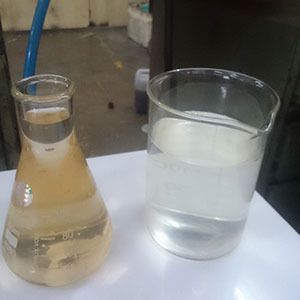Effluent Treatment
For factories, the effluent treatment is the primary concern. Ozone can reduce COD, BOD and colour from the effluent. Apart from this, it can also remove many toxic substances such as pesticides from the effluent.
Industrial effluent wastewater may carry a broad range of contaminants, including BOD, COD, Colour ,Phenols, Chemical waste and other complex chemicals. Ozone, in combination with other physical, chemical or biological processes, can treat complex industrial wastes due to its strong oxidative nature. Ozone oxidation breaks down organic molecules into smaller biodegradable components and in some cases to carbon dioxide.
Advanced oxidation processes refers specifically to processes in which oxidation of organic contaminants occurs primarily through reactions with hydroxyl radicals. AOPs usually refer to a specific subset of processes that involve O3, H2O2, and/or UV light.
Textile, dying & printing industry waste water is a colored effluent with high COD & BOD. Many times due composition of colored effluent it is difficult to bring down color & COD in textile effluent.
Applications Features
- Primary Oxidation
- Enhance Biological Treatment
- Advance Oxidation Process (AOP)
- Tertiary Disinfection
- Polishing
- Color Reduction
- COD/BOD ABATMENT
- Water Recycle
- Environmental Friendly
- Zero Discharge
| Ozone Stage | Ozone Dosage | Ozone Residual Range |
|---|---|---|
| Raw | 30-1000 ppm | Nil |
| Tertiary | 10-500 ppm | Nil |


